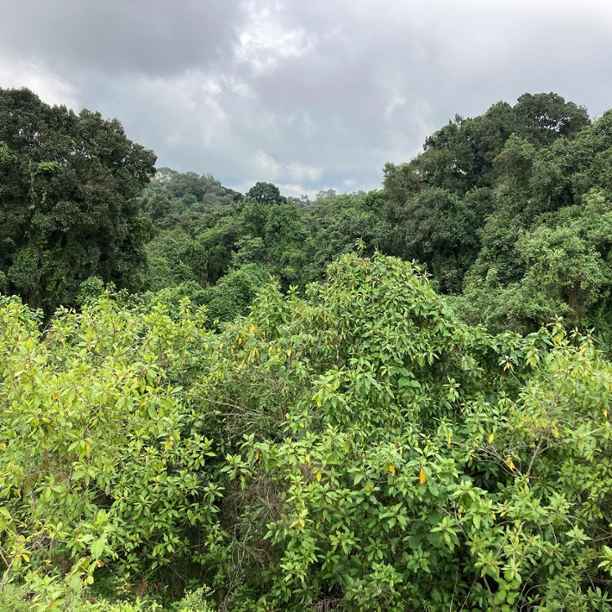Many pension funds are still hesitant to fully embrace biodiversity as an investment theme. The numerous definitions and the high level of abstraction may contribute to this reluctance. Nierop: “In fact, it's very simple: biodiversity ensures that nature functions properly and more than 50% of the global economy depends on this.”
According to Nierop, biodiversity loss should be regarded equally as seriously as climate change for that reason alone. Like climate change, biodiversity loss is a systemic risk, argues Nierop. “Biodiversity loss destroys precisely what we depend on economically. Once you recognise that, the rest follows logically: investment policy, selection criteria and accountability to participants. All investments have an impact on biodiversity, unfortunately mostly negative at present. If we make the right choices, however, it can also be positive.”
No more excuses for inaction
According to Nierop, pension funds are mainly struggling with the practical implementation of a biodiversity strategy. His advice: “Don't wait too long and recognise biodiversity loss as a material risk at least.” A common objection is that it is difficult to measure the impact of biodiversity investments and therefore difficult to account for them to stakeholders and participants. Nierop understands the need for indicators and standards. "But that should not be an excuse for inaction. Back when we started climate investing, there was no single, overarching framework in place.”
There are plenty of starting points for creating a framework. The main causes of biodiversity loss are now clear: climate change, pollution, habitat loss and overexploitation. “Measurable indicators already exist for these, such as soil health, species diversity and land use,” says Nierop.
New technology is making it increasingly easier to measure these indicators. “Satellite data and drones can be used to map changes in land use and soil quality over time. Echo technology can be used to measure a forest’s species diversity based on sound. AI models are improving analysis, pattern recognition and predictions. But someone needs to measure it. That goes hand in hand with actual investment.”
A biodiversity strategy limits risks
What are the potential risks and returns associated with biodiversity investments? Nierop argues that there are plenty of opportunities to take the first steps in this area, such as regenerative agriculture or forestry. “Agriculture and forestry have been asset classes for years. They have stable cash flows and a low correlation with financial markets. That dynamic does not change because you start farming in a more nature-inclusive way or manage forests differently.”
In fact, a biodiversity strategy can actually reduce risks. “Regenerative agriculture improves soil quality, which makes an area less vulnerable to flooding or drought. Healthy soils, for example, retain more water. These are all factors that not only protect and improve biodiversity, but ultimately also have an impact on financial returns,” argues Nierop.
Nierop points to the danger of sticking to conventional models. “If you continue to invest in unsustainable agriculture or forestry, you run the risk of these becoming the ‘stranded assets’ of the future. Models that deplete the soil are financially unsustainable in the long term. Research and practice show that nature-inclusive models are more sustainable and financially profitable.”
In addition, we are seeing the emergence of ‘payments for ecosystem services’ (PES): financial compensation for providing or maintaining ecosystem services, such as carbon sequestration, water purification or biodiversity restoration. The best-known example of this are carbon credits, but PES is broader than that. For example, a sustainable forest manager can receive compensation from a drinking water company for improving the quality and availability of water downstream. In July 2025, the EU published a Nature Credits Roadmap to boost private investment in nature-positive actions. “This will enable nature conservation to provide an additional source of income, underpinned by measurable impact and reliable contractual agreements,” says Nierop.
A good start...
Nierop advises pension funds to look beyond a separate ‘biodiversity portfolio’. “Biodiversity is not a separate asset class. It is a systemic risk that should be taken into account in every investment category.”
For listed equities and bonds, the focus is mainly on limiting negative impact. “Consider how companies manage land use or their dependence on natural resources. Companies that damage biodiversity also pose a financial risk.”
For those who want to go further than exclusion, there are also concrete solutions with a positive impact. “We are talking about financing sustainable land use, water management and sustainable food production; economic activities that we depend on every day,” says Nierop. Many of these solutions can be found in private markets.
Bundling and scaling up small projects
Investing in biodiversity requires expertise, but not everyone has a background in biology. However, that need not be an obstacle, according to Nierop. “You don't have to reinvent the wheel. There are now specialist fund managers with decades of experience in this field.” We have been building sustainable agricultural supply chains since the 1990s. “We are very active in this area through various investment funds and via Triodos Bank.”
Triodos Investment Management is currently developing a real assets strategy with a Canadian pension fund, focusing on regenerative agriculture and sustainable forest management in Europe and North America. “By working with local partners who really understand sustainability and bundling smaller investments into a fund structure, you can achieve a positive biodiversity impact on a larger scale, making it interesting for parties that want to allocate larger sums.”
This interview was originally published in Dutch on PensioenPro.


